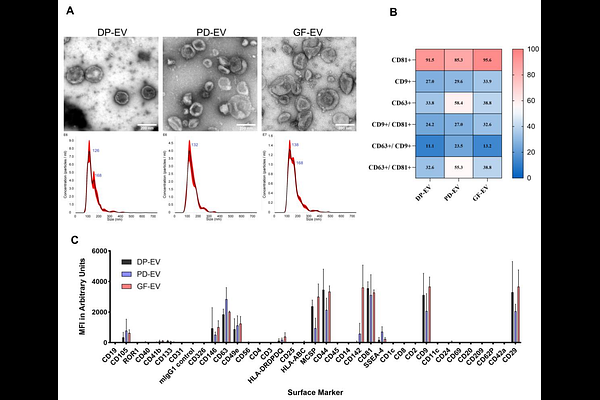The biomolecular profiles of extracellular vesicles from odontogenic stem cell lines depict donor-dependent differences and emphasize their therapeutic and regenerative potential

The biomolecular profiles of extracellular vesicles from odontogenic stem cell lines depict donor-dependent differences and emphasize their therapeutic and regenerative potential
Xu, Y.; Sarisoy, A.; Buhl, M.; Silva, A. S.; Gonzalez Rubio, J.; Thiebes, A. L.; Fuest, S.; Smeets, R.; Ricklefs, F. L.; Apel, C.
AbstractBackground: Stem cell derived extracellular vesicles (EVs) hold great promise in regenerative medicine. However, a comprehensive understanding of the regenerative capabilities of EVs from different stem cell sources remains limited. Methods: This study systematically compares EVs derived from three odontogenic cell types. Analyses includes EV isolation and characterization, cell viability assays, vasculogenesis experiments, proteomic profiling, and miRNA sequencing. Results: All three EV types displayed similar surface marker profiles. Dental pulp stem cell derived EVs showed superior cellular uptake, promoted higher cell proliferation, and enhanced vasculogenesis compared to periodontal ligament stem cell derived EVs. Gingival fibroblast-derived EVs performed similarly in functional assays. Principal component analysis of miRNA profiles revealed strong biological heterogeneity among EV sources, with donor specific factors exerting a greater influence on EV characteristics than cellular origin, an aspect underexplored in prior studies. Conclusions: These findings underscore the complexity of EV functionality and highlight the regenerative potential of dental stem cell derived EVs. Keywords: Extracellular vesicles, Stem cells, miRNA sequencing, Vasculogenesis, Proliferation